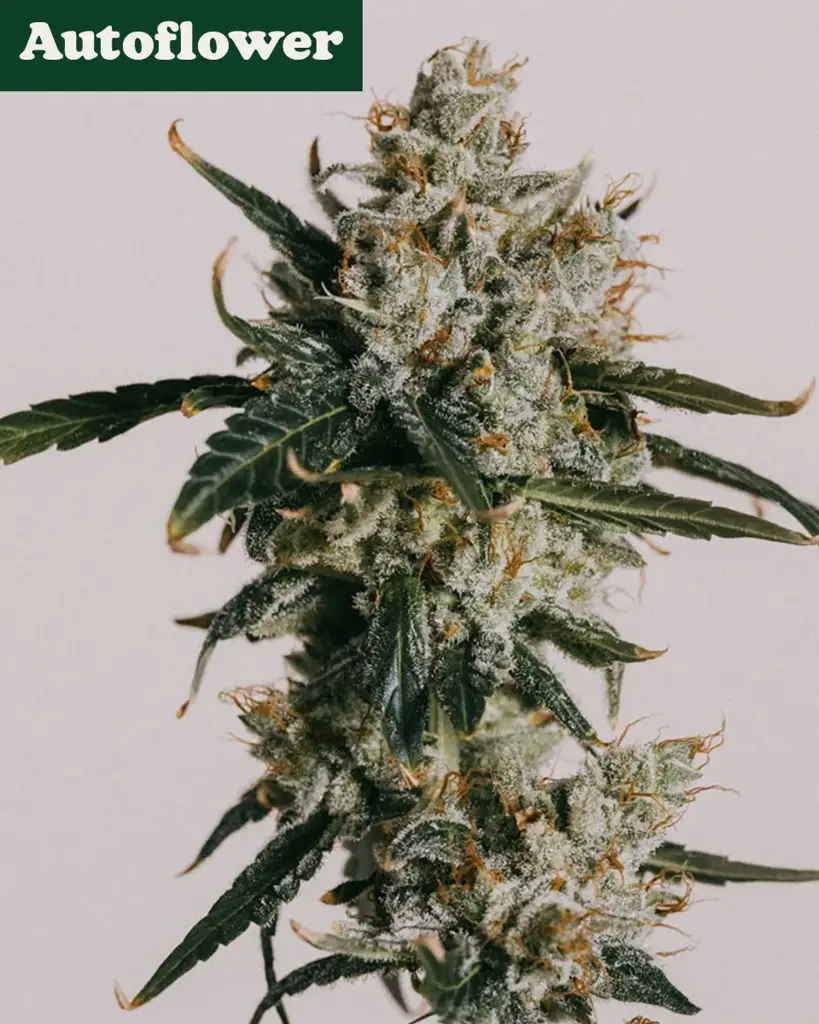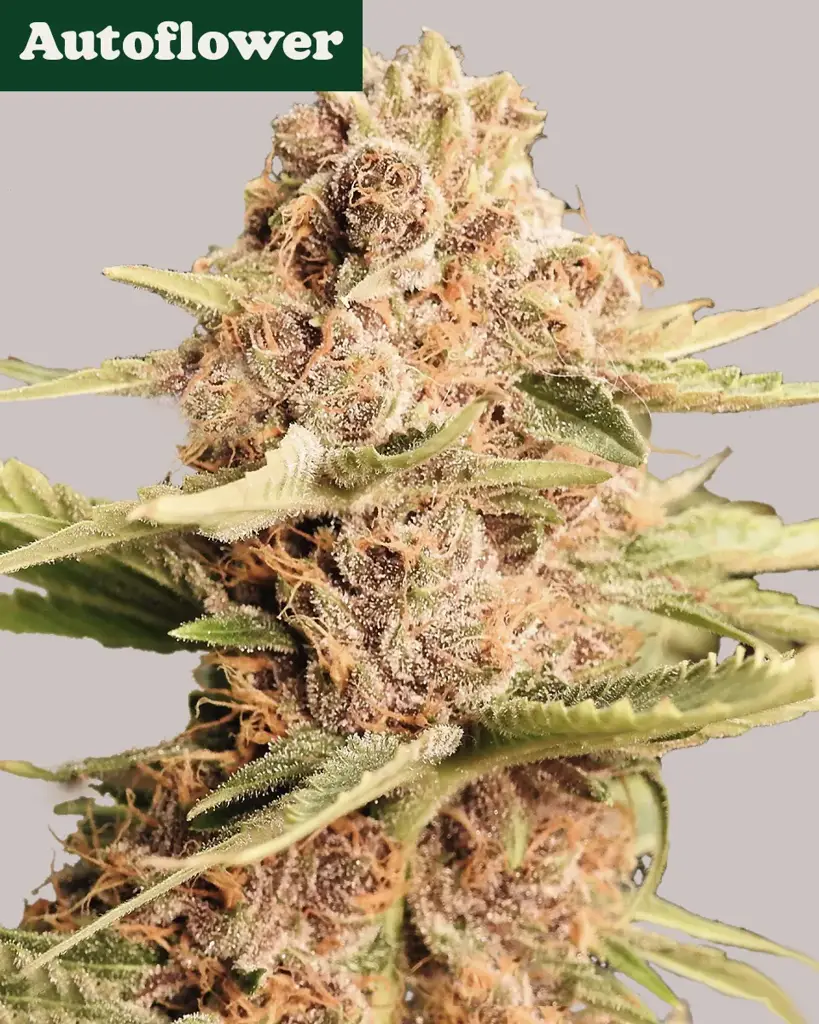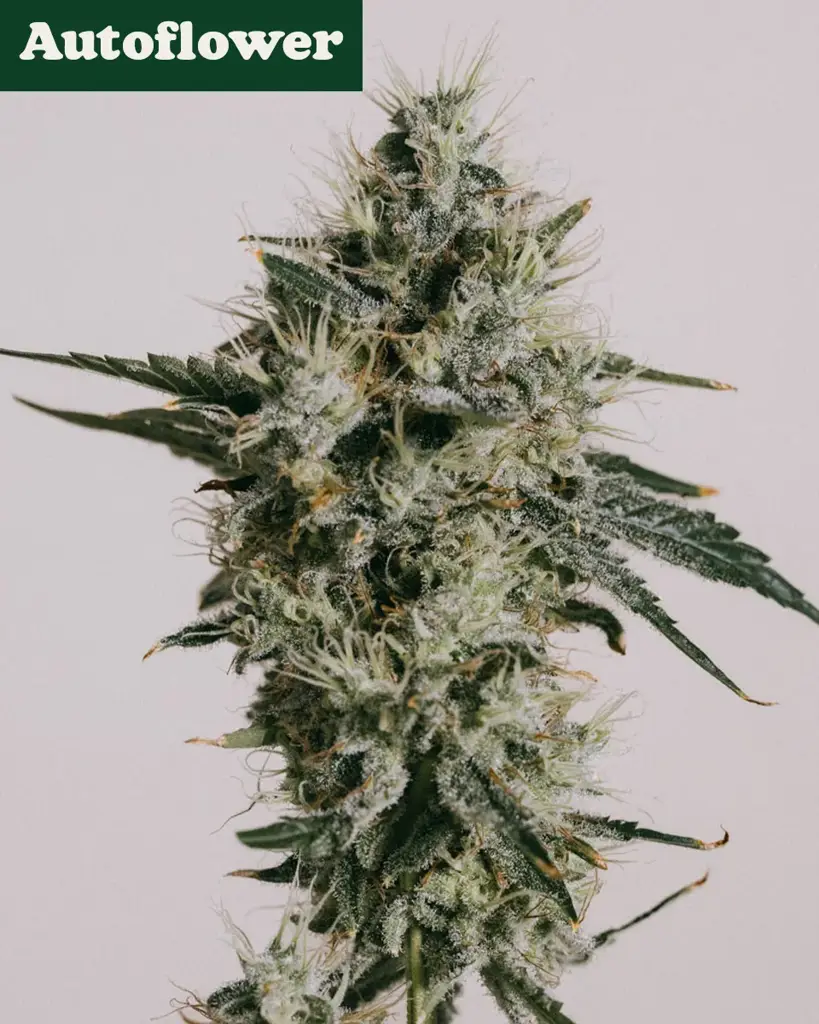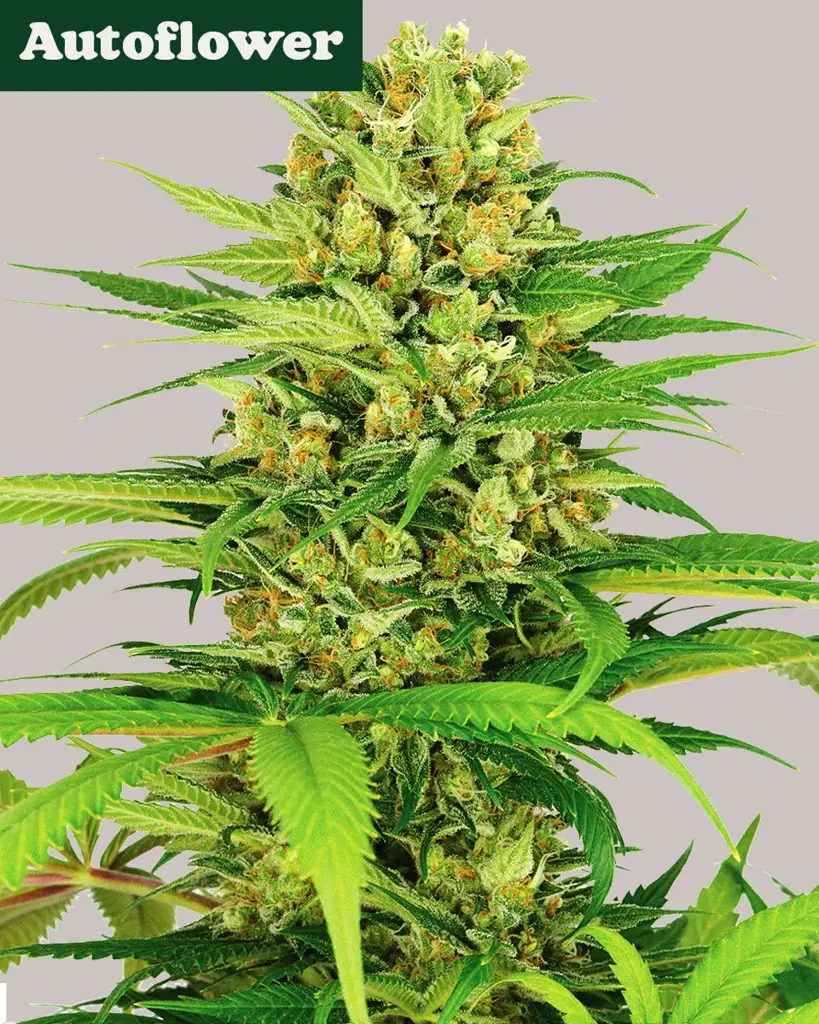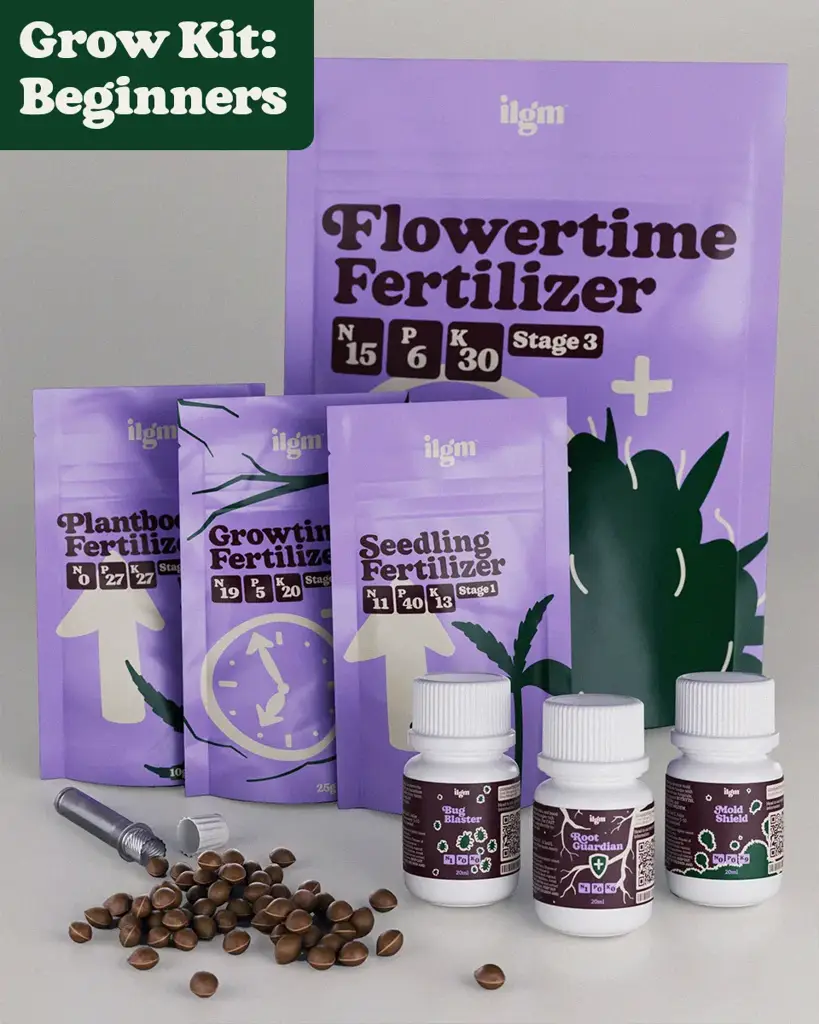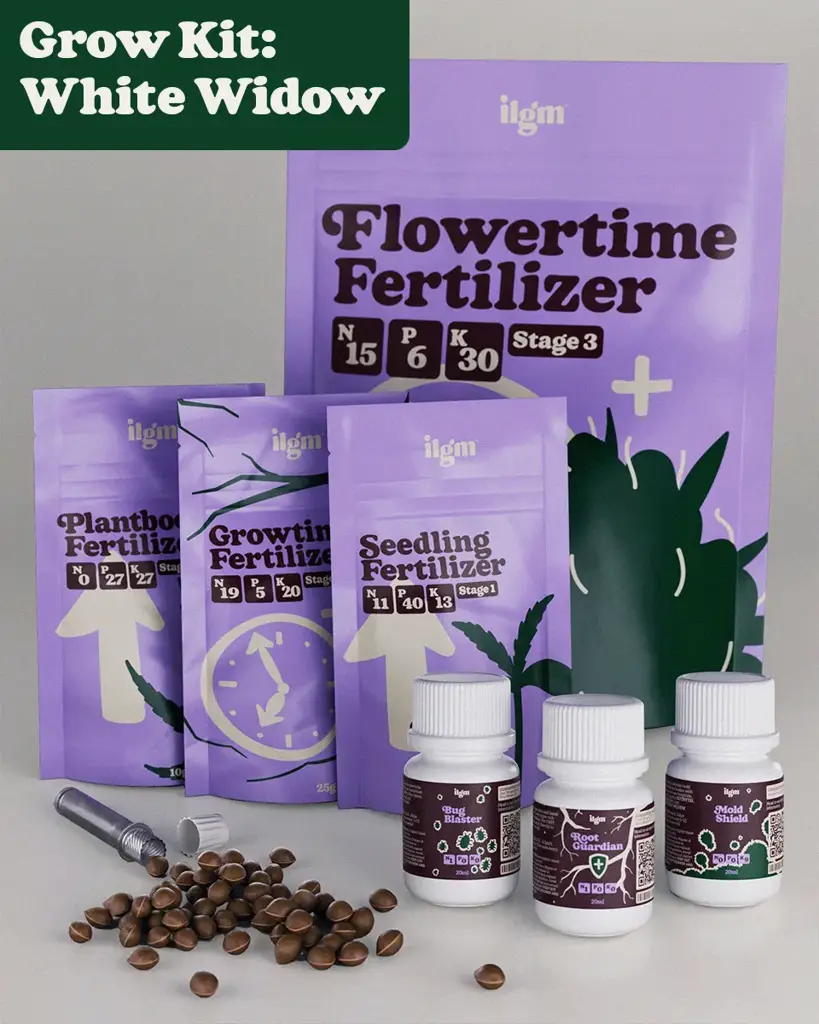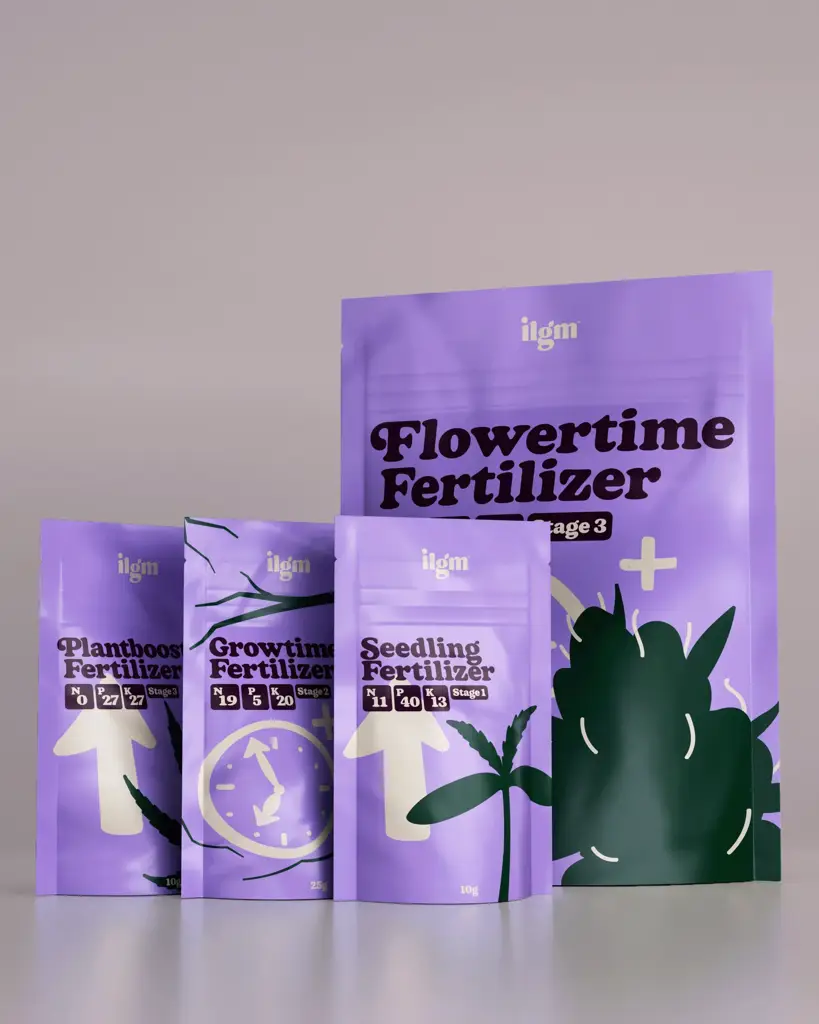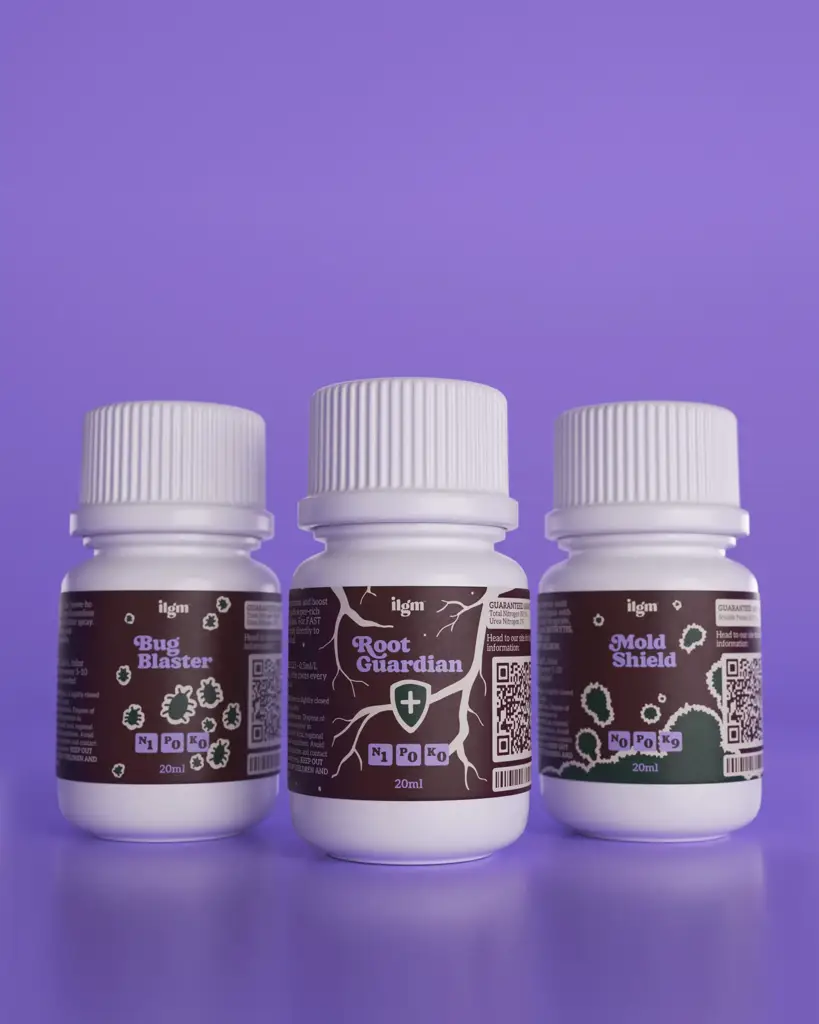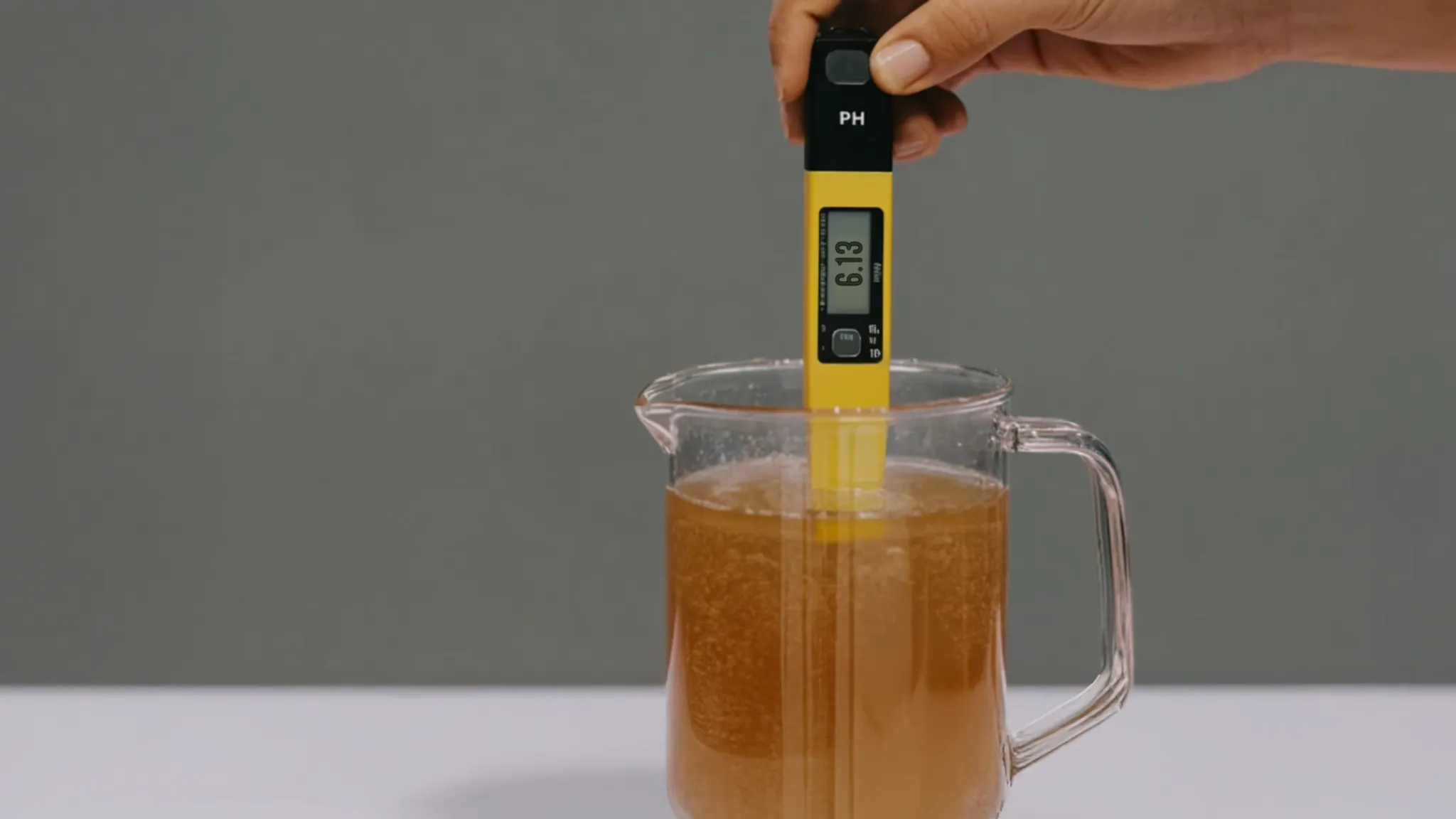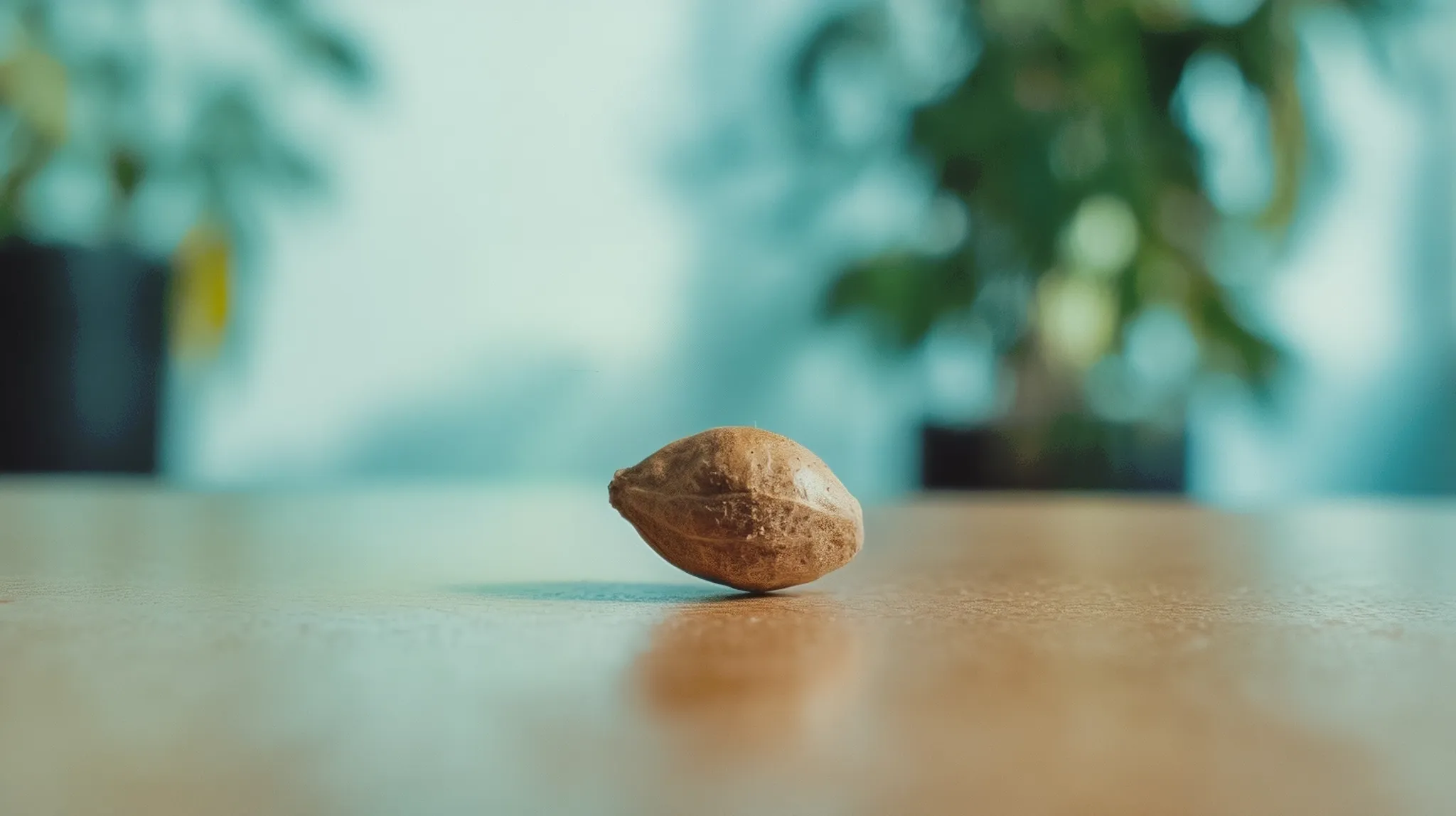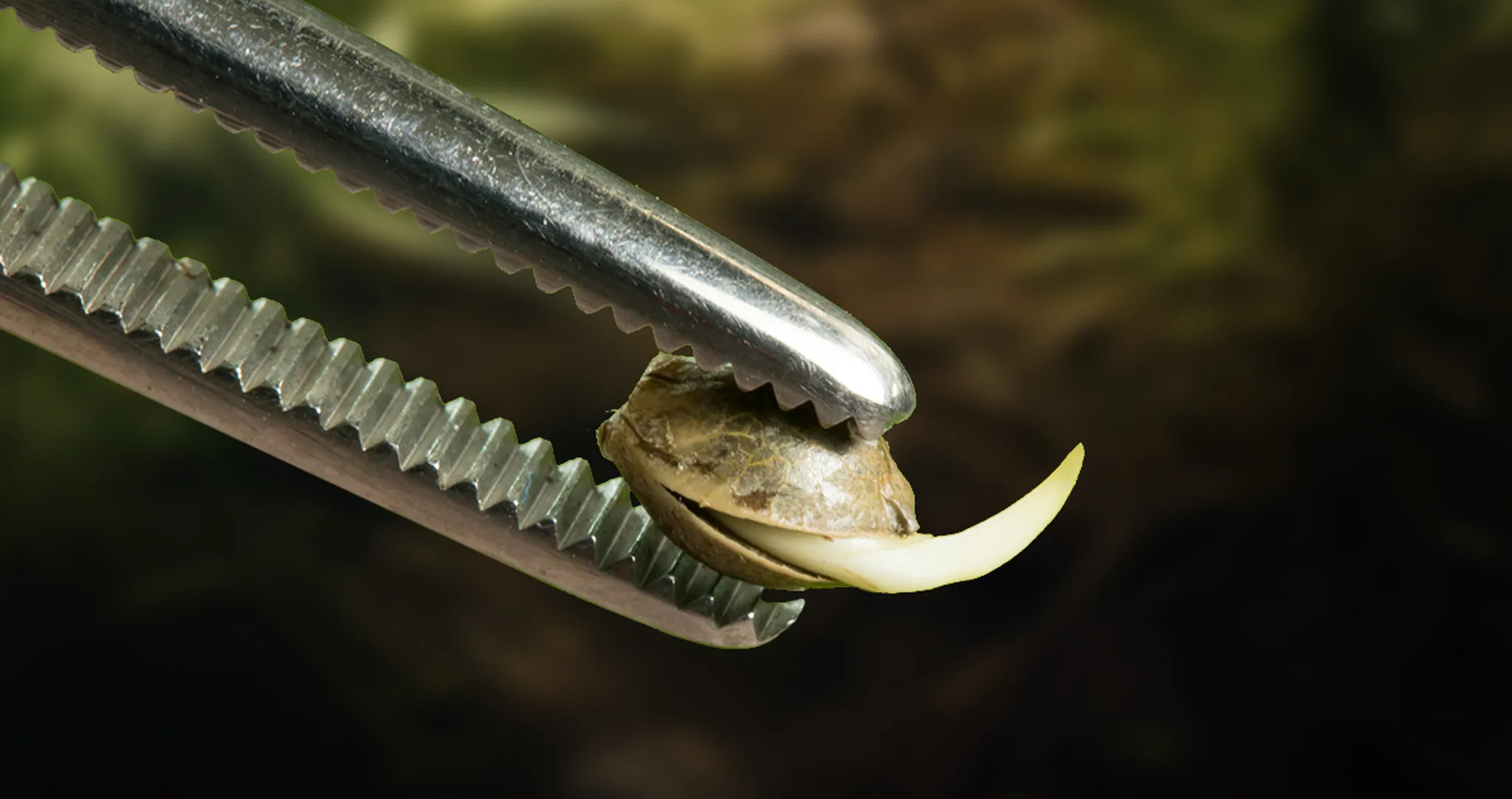
Cannabis Seedling Problems and How To Fix Them
Starting with cannabis seedlings can feel like raising a bunch of tiny, green babies—they need just the right care to grow up happy and strong. And just like any young plant, seedlings have unique needs and a few quirks to watch out for. The good news? Most cannabis seedling problems are easy to fix once you know what to look for. Early diagnosis and a few simple adjustments can help you steer clear of issues down the line.
Table of contents
So, let’s talk about how to make sure those baby plants get the best possible start. I’m here to walk you through every step, from choosing the right soil to spotting the signs that something might be off. We’ll cover each issue with a quick diagnosis and a clear fix so you can spend more time enjoying the grow and less time worrying about it.
Too Long, Didn't Read
Healthy seedlings are vibrant green with upright stems and well-formed leaves. Avoid spots, deformities, or discoloration.
Keep temperatures at 72-79°F, humidity around 70%, and soil moist but not soggy.
Common issues include overwatering, nutrient problems, temperature stress, stretching, and pests.
Fix problems by balancing water, using minimal nutrients, and adjusting light intensity and airflow.
Start with gentle light, increasing gradually to prevent burning or stretching.
Stable conditions and daily monitoring are key to healthy growth and a successful grow overall.
Our Bestsellers
What Does a Healthy Cannabis Seedling Look Like?
Healthy cannabis seedlings show a few clear signs that they’re thriving:
Color: Healthy seedlings are a vibrant green. Pale or yellowing leaves may indicate a problem, so aim for that rich, dark green.
Structure: The first two leaves, called cotyledons, should emerge, followed by serrated “true” leaves. These leaves should be small but well-formed.
Stem: The stem should be strong and upright, not bending or stretching too much. If your seedling looks tall and spindly, it’s usually reaching for more light.
Turgidity: Turgid leaves and stems mean your plant is well-hydrated and able to stand up. Wilting or drooping might mean they need water, or, surprisingly, they might have too much!
Disease-Free Appearance: No spots, curling, or other irregularities—just smooth, happy leaves.
What does an unhealthy cannabis seedling look like?
An unhealthy seedling may have yellow, curling, or crispy leaves. It might also appear droopy or stretched out. Symptoms such as discoloration, wilting, or abnormal growth are often the first indicators of trouble. Identifying these symptoms early and addressing them can prevent more severe issues down the road.
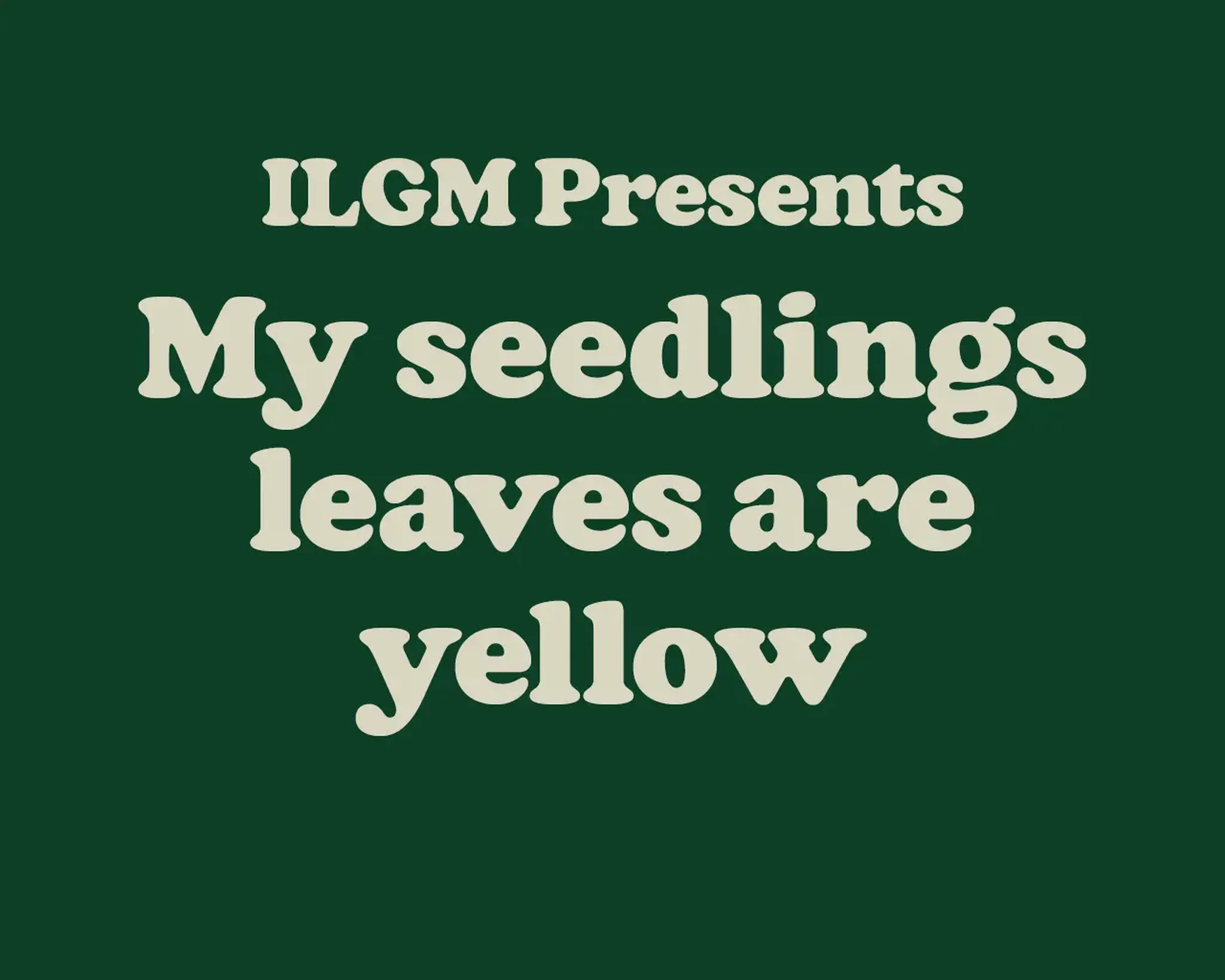
First Grow?
How Can I Create the Perfect Environment for Healthy Cannabis Seedlings?
Keeping your cannabis seedlings healthy is all about creating the right environment. With the ideal balance of temperature, humidity, light, and moisture, you’ll reduce the chances of common issues and help your seedlings thrive.
How Deep Should I Plant Cannabis Seeds?
Plant cannabis seeds about half an inch (1.3 cm) deep. Planting too deep can slow germination, while planting too shallow may dry them out. Make sure the soil is loose enough to allow the seedling to emerge easily.

Ideal Depth: Plant seeds about 1-3 cm deep. This gives roots adequate support and keeps the seedling stable.
Avoid Going Too Deep: If planted too deep, seedlings may struggle to emerge, which can stunt growth.
Maintain Ideal Temperature and Humidity
Seedlings need a warm and stable environment to thrive. Aim for temperatures between 72°F and 798°F. Humidity should be around 70% to help keep their young leaves hydrated. Maintaining the right balance between temperature and humidity ensures that your seedlings have the best chance at a successful start. Inconsistent temperatures or humidity can stunt their growth or cause issues like mold, so always monitor these conditions closely.
Temperature: Seedlings do best at around 72-79°F (22-26°C). Cooler temperatures can slow growth, while excessive heat can cause stress.
Humidity: Aim for a relative humidity of around 70%, as seedlings require more humidity than mature plants to support their developing roots.
Avoid Overly Wet or Dry Substrate
The substrate should be kept moist but not soggy. If it's too wet, the roots can suffocate; too dry, and they'll stop growing. Aim for a happy medium to ensure proper root development. Consistent moisture encourages the growth of a robust root system, which is critical for healthy seedlings. Using a soil moisture meter can help you achieve the ideal level of moisture.
Common Threats to Cannabis Seedling Health
Damping off and Root Rot. The names say it all. If the growing substrate is too damp, roots and stems become diseased and unable to feed or support the young plant.

Look for yellowing leaves with brown edges, wilting or stunted stems, and soft, discolored, wet-looking roots.
Follow your nose: if you can’t see the roots but detect a smell that reminds you of a swamp or sewer, chances are you’ve got rot below the surface.
Verticillium and Fusarium wilts. Just like it sounds, a drooping, wilting cannabis seedling may be infected with one or more fungi from these groups.

Look for small dark spots on the lower leaves. Leaves turning grey or brown, curling, or dying. Plants aren’t able to circulate water from their root systems effectively, so they start to droop. Pythium: a microorganism that takes advantage of young or diseased plants. Pythium infections are generally deadly. It can spread incredibly quickly in hydroponic systems.

Most of these diseases are caused by several microorganisms that thrive where oxygen levels are low. Seedlings that have several healthy nodes may recover if conditions are corrected. Check for proper drainage and temperature range (especially watch out for things getting too hot because hot water cannot hold oxygen). Consider flushing with a weak hydrogen peroxide solution (2% or less) and introducing beneficial microorganisms.
Prevention, by way of cleanliness and temperature management, is key to stopping diseases caused by pythium, verticillium, fusarium, and other microorganisms before they can take hold of your seedlings.
Keep the Environment Warm Enough
Cannabis seedlings need warmth to thrive. If temperatures dip too low, growth will slow down significantly. Consider using a heat mat if growing in cooler conditions. Heat mats are a great way to ensure a stable root temperature, especially in areas with fluctuating temperatures. Maintaining a consistent warmth helps seedlings grow faster and stronger, which is crucial during these early stages.
Temperature Range: Seedlings do best between 72-79°F (22-26°C). During colder months, consider a heating mat or grow tent to keep temperatures consistent.
Avoid Excessive Humidity
While high humidity is essential, too much can promote mold and other problems. Keep an eye on humidity levels and ensure there is some airflow around your seedlings. Stagnant air with high humidity is a breeding ground for disease-causing microorganisms. Using a small fan to circulate air can help prevent these issues, keeping your seedlings healthy and problem-free, but make sure the fan isn't blowing directly on the seedlings because, at this stage, they are fragile and could be over-stressed by the wind.
If you use a Humidity Dome: This can help maintain moisture levels for newly sprouted seedlings. However, remove the dome once the first set of one-fingered leaves appears to prevent excessive humidity that could lead to damping-off.
Adjust Light Intensity Carefully
Seedlings need light, but not too much. Place your light source around 24-36 inches above your seedlings to start and adjust as they grow. If they stretch too much, they need more light; if they look burnt, back the light off a bit. Proper lighting is key to preventing seedlings from becoming "leggy." Light that is too intense can also cause stress, leading to burnt leaves. Adjust the distance gradually as the seedlings grow to maintain the right balance.
Avoid Light Burn: Seedlings are sensitive to intense light. Keep lights at a safe distance or use lower-intensity bulbs to prevent burning.

Watch for Stretching: Stretching indicates insufficient light. If you notice this, try bringing your light source closer to provide adequate coverage.


Common Seedling Problems and Their Fixes
When you spot an issue, don’t panic. Here’s a table of common cannabis seedling problems with clear symptoms, diagnoses, and fixes. Why is my cannabis seedling growing so slowly?
Slow growth could be due to a lack of light, improper temperatures, poor airflow, or incorrect watering. Make sure all environmental conditions are ideal. Providing consistent care and monitoring each aspect of the environment—light, air, temperature, moisture—will help ensure optimal growth rates for your seedlings.
Over and Under Watering
Overwatering is one of the most common issues for cannabis seedlings. If your plant looks droopy but not dry, it's likely overwatered. Use a smaller pot to start, and only water when the top inch of soil is dry. Make sure your container has proper drainage to avoid water stagnation. Overwatering essentially drowns the roots, roots, which can quickly stunt growth. ‘Bad’ microorganisms take advantage of dying or dead roots and cause damping off, stem and root rots, and wilts. If you suspect overwatering, allow the soil to dry out before watering again, and consider switching to a pot with better drainage.

Symptoms of underwatering include wilting and dry soil that has pulled away from the container edges. If this happens, water thoroughly and then let the soil dry before watering again. Regular but moderate watering is key. Underwatered seedlings will appear limp and lifeless. It’s crucial to water enough to saturate the soil but not so much that it remains waterlogged. Keeping a consistent schedule can help prevent underwatering and ensure healthy root development.

Watering Techniques for Seedlings
Water sparingly to keep the top inch of soil slightly moist. In the early stages, use a spray bottle or gentle watering technique to avoid drowning the roots. It is better to water lightly and frequently than to drench the soil.
Nutrient Issues
Cannabis seedlings don't need much in the way of nutrients early on, and they need to develop enough leaves and roots to properly use them. If you see yellowing, crispy, or spotted leaves, your plant may be experiencing nutrient toxicity or deficiency. Stick to a high-quality potting mix and avoid adding nutrients until the plant is a few weeks old. Over-fertilizing is a common mistake among beginners. Seedlings are especially sensitive to nutrient levels, and it’s easy to burn them with too much fertilizer. When in doubt, use less and observe your plant's reaction.
Temperature Stress (Heat or Cold)

If leaves start curling or wilting, it might be a sign of temperature stress. Keep your grow space between 72°F and 79°F to ensure optimal growth. Too hot, and your seedlings will wilt; too cold, and growth will slow to a crawl. Temperature stress is often easy to spot and correct. If you notice leaves curling upwards, it’s likely due to heat, whereas slowed growth usually indicates cold stress. Adjusting the environment promptly can help your seedlings recover quickly.
Light Issues
If your seedlings are stretching out too much, they're not getting enough light. On the other hand, burnt or crinkled leaves indicate too much light. Adjust the light distance as needed to provide an optimal environment. Stretching seedlings need more light, so consider lowering your lamp or checking to see if it is strong enough (was it made for growing plants?). For burnt seedlings, raise the light or switch to a lower intensity. The right balance of light is key to keeping seedlings compact and robust.
Seed Shell Stuck on Seedling

Sometimes, the seed shell sticks to the seedling after germination. Gently mist the shell and wait a few hours. If it doesn't fall off due to the natural unfurling of the first leaves, you may try to remove it carefully with tweezers. Stuck seed shells can delay growth, cause deformation, or stop development entirely. Be gentle to avoid damaging the seedling’s delicate leaves. In most cases, added moisture will soften the shell enough for it to fall off naturally.
Spindly or Stretching Seedlings
Leggy seedlings are often the result of insufficient light. Move your light closer or switch to a stronger light source to encourage stronger, bushier growth. Spindly seedlings may also need additional support until their stems strengthen. Adding a small stake can help prevent them from toppling over while they develop a more solid structure.
Bugs or Pests That Might Cause Seedling Problems
Seedlings can attract aphids, spider mites, and other pests. Check the undersides of leaves and soil surface. Insecticidal soap or neem oil are gentle remedies to keep pests at bay.

What Are the Best Tips for Maintaining Healthy Seedlings?
Once you’ve tackled the initial setup and have a good grasp on common cannabis seedling problems, let’s talk about keeping them healthy with a few easy tips:
Water Wisely: The soil should be moist but not soaked. Let the top layer dry out slightly before each watering, but don’t let it go bone-dry.
Keep Temperatures Stable: Seedlings love warmth, so aim for a consistent 72-79°F range. Temperature fluctuations can really stress them out, so a thermostat can help maintain a good growing environment. Leave a thermometer in the soil so you can easily check the temperature every time you visit your plants.
Adjust Light Levels as They Grow: Seedlings don’t need intense light. Start with gentle lighting and gradually increase as they mature, keeping lights a safe distance away to prevent burning.
Use Nutrients Sparingly: Seedlings don’t need much in the way of nutrients initially. Let them grow a bit before introducing a light nutrient solution, starting with about half the recommended dose.
Conclusion
Growing cannabis seedlings can be a delicate process, but once you understand their needs, it's very manageable. By maintaining proper temperature, humidity, and watering, you can help ensure your seedlings grow into strong, healthy plants. Keep an eye out for early signs of trouble, and you'll be well on your way to a successful cannabis grow.
Remember that each seedling is different, and learning to read your plants will make you a more effective grower over time. Patience and close observation are key to nurturing your cannabis seedlings through this vulnerable stage, and the reward is well worth the effort.

Gabriel ILGM
Gab Wulff is an ecologist and designer linking sustainability, community gardening, and cannabis reform.


